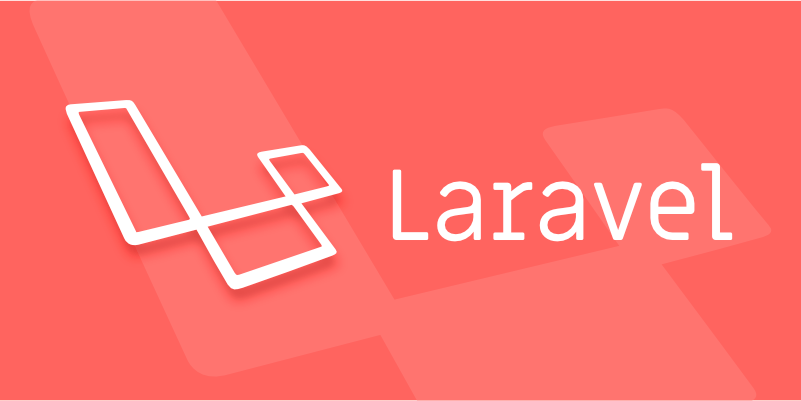Laravel's Form Model Binding is a feature implemented through the laravelcollective/html package that automatically fills model data into form fields. 1. You need to install the package and configure the service provider and facade first; 2. Use Form::model() to bind model instances in the Blade template; 3. The form field name must be consistent with the model attributes for automatic filling; 4. Pay attention to closing the form and using the HTTP method correctly; 5. Applicable to editing scenarios, and you can pass empty models when creating; 6. It is more concise than native HTML and reduces the risk of missing backfill logic, but it is not applicable in Livewire or Inertia.js.

Of course, Laravel's Form Model Binding is a very practical feature, especially when dealing with form editing scenarios, which can greatly simplify code and reduce duplicate logic. Next I will directly talk about the key points and usage methods.

What is Form Model Binding?
Form Model Binding is a feature provided by the laravelcollective/html extension package in Laravel. It allows you to bind a model instance in the form, so that the corresponding value will be automatically filled when rendering the form field.

For example, if you have a user editing page, you don’t need to manually set the value of the input box one by one, it will automatically match according to the model.
How to install and configure
If you are using the newer Laravel version (8), you need to install this package first:

composer requires laravelcollective/html
Then add in the providers array of config/app.php :
Collective\Html\HtmlServiceProvider::class,
And add two facades in aliases :
'Form' => Collective\Html\FormFacade::class, 'Html' => Collective\Html\HtmlFacade::class,
After this step is completed, you can start using it.
How to use it in Blade templates
Suppose you are editing a user information page and the controller has passed in the $user instance.
You can write this way:
{!! Form::model($user, ['route' => ['users.update', $user->id], 'method' => 'PUT']) !!}
{{ Form::text('name') }}
{{ Form::email('email') }}
{{ Form::submit('Update') }}
{!! Form::close() !!} The key here is Form::model() method, which binds the model. Each field after that will automatically fill the value as long as the name corresponds to the model attribute.
Frequently Asked Questions and Notes
- The field name must be consistent with the model attribute : otherwise it will not be automatically filled.
- Avoid field conflicts : An error may occur if the field name is duplicated with the key in the form request.
- Remember to close the model binding : use
Form::close()or end the!!}tag. - The POST/PUT/PATCH method should be used in conjunction with the routing method : for example, the update operation should be used
method="PUT"and withRoute::put().
If you also want to use this syntax when creating new data, you can pass an empty model in:
$user = new App\Models\User(); Form::model($user, ...)
What is the difference between it and ordinary forms?
Compared to writing HTML forms directly:
<input type="text" name="name" value="{{ old('name', $user->name) }}"> Using Form Model Binding is more concise and it is not easy to miss old() backfilling logic. Especially when there are many fields and data echoes after verification failure, the advantages are more obvious.
However, if you are using Laravel Livewire or Inertia.js, you may not need to use this package because they have their own form state management methods.
Basically, that's not complicated but it's easy to ignore details. For example, forgetting to bind the model or the field name doesn't match, will cause the data to not be displayed.
The above is the detailed content of Using Form Model Binding in Laravel?. For more information, please follow other related articles on the PHP Chinese website!

Hot AI Tools

Undress AI Tool
Undress images for free

Undresser.AI Undress
AI-powered app for creating realistic nude photos

AI Clothes Remover
Online AI tool for removing clothes from photos.

Clothoff.io
AI clothes remover

Video Face Swap
Swap faces in any video effortlessly with our completely free AI face swap tool!

Hot Article

Hot Tools

Notepad++7.3.1
Easy-to-use and free code editor

SublimeText3 Chinese version
Chinese version, very easy to use

Zend Studio 13.0.1
Powerful PHP integrated development environment

Dreamweaver CS6
Visual web development tools

SublimeText3 Mac version
God-level code editing software (SublimeText3)

Hot Topics
 What are policies in Laravel, and how are they used?
Jun 21, 2025 am 12:21 AM
What are policies in Laravel, and how are they used?
Jun 21, 2025 am 12:21 AM
InLaravel,policiesorganizeauthorizationlogicformodelactions.1.Policiesareclasseswithmethodslikeview,create,update,anddeletethatreturntrueorfalsebasedonuserpermissions.2.Toregisterapolicy,mapthemodeltoitspolicyinthe$policiesarrayofAuthServiceProvider.
 How do I install Laravel on my operating system (Windows, macOS, Linux)?
Jun 19, 2025 am 12:31 AM
How do I install Laravel on my operating system (Windows, macOS, Linux)?
Jun 19, 2025 am 12:31 AM
Yes,youcaninstallLaravelonanyoperatingsystembyfollowingthesesteps:1.InstallPHPandrequiredextensionslikembstring,openssl,andxmlusingtoolslikeXAMPPonWindows,HomebrewonmacOS,oraptonLinux;2.InstallComposer,usinganinstalleronWindowsorterminalcommandsonmac
 What are controllers in Laravel, and what is their purpose?
Jun 20, 2025 am 12:31 AM
What are controllers in Laravel, and what is their purpose?
Jun 20, 2025 am 12:31 AM
The main role of the controller in Laravel is to process HTTP requests and return responses to keep the code neat and maintainable. By concentrating the relevant request logic into a class, the controller makes the routing file simpler, such as putting user profile display, editing and deletion operations in different methods of UserController. The creation of a controller can be implemented through the Artisan command phpartisanmake:controllerUserController, while the resource controller is generated using the --resource option, covering methods for standard CRUD operations. Then you need to bind the controller in the route, such as Route::get('/user/{id
 How do I customize the authentication views and logic in Laravel?
Jun 22, 2025 am 01:01 AM
How do I customize the authentication views and logic in Laravel?
Jun 22, 2025 am 01:01 AM
Laravel allows custom authentication views and logic by overriding the default stub and controller. 1. To customize the authentication view, use the command phpartisanvendor:publish-tag=laravel-auth to copy the default Blade template to the resources/views/auth directory and modify it, such as adding the "Terms of Service" check box. 2. To modify the authentication logic, you need to adjust the methods in RegisterController, LoginController and ResetPasswordController, such as updating the validator() method to verify the added field, or rewriting r
 How do I use Laravel's validation system to validate form data?
Jun 22, 2025 pm 04:09 PM
How do I use Laravel's validation system to validate form data?
Jun 22, 2025 pm 04:09 PM
Laravelprovidesrobusttoolsforvalidatingformdata.1.Basicvalidationcanbedoneusingthevalidate()methodincontrollers,ensuringfieldsmeetcriterialikerequired,maxlength,oruniquevalues.2.Forcomplexscenarios,formrequestsencapsulatevalidationlogicintodedicatedc
 Selecting Specific Columns | Performance Optimization
Jun 27, 2025 pm 05:46 PM
Selecting Specific Columns | Performance Optimization
Jun 27, 2025 pm 05:46 PM
Selectingonlyneededcolumnsimprovesperformancebyreducingresourceusage.1.Fetchingallcolumnsincreasesmemory,network,andprocessingoverhead.2.Unnecessarydataretrievalpreventseffectiveindexuse,raisesdiskI/O,andslowsqueryexecution.3.Tooptimize,identifyrequi
 How do I escape HTML output in a Blade template using {{{ ... }}}? (Note: rarely used, prefer {{ ... }})
Jun 23, 2025 pm 07:29 PM
How do I escape HTML output in a Blade template using {{{ ... }}}? (Note: rarely used, prefer {{ ... }})
Jun 23, 2025 pm 07:29 PM
InLaravelBladetemplates,use{{{...}}}todisplayrawHTML.Bladeescapescontentwithin{{...}}usinghtmlspecialchars()topreventXSSattacks.However,triplebracesbypassescaping,renderingHTMLas-is.Thisshouldbeusedsparinglyandonlywithfullytrusteddata.Acceptablecases
 How do I mock dependencies in Laravel tests?
Jun 22, 2025 am 12:42 AM
How do I mock dependencies in Laravel tests?
Jun 22, 2025 am 12:42 AM
TomockdependencieseffectivelyinLaravel,usedependencyinjectionforservices,shouldReceive()forfacades,andMockeryforcomplexcases.1.Forinjectedservices,use$this->instance()toreplacetherealclasswithamock.2.ForfacadeslikeMailorCache,useshouldReceive()tod






